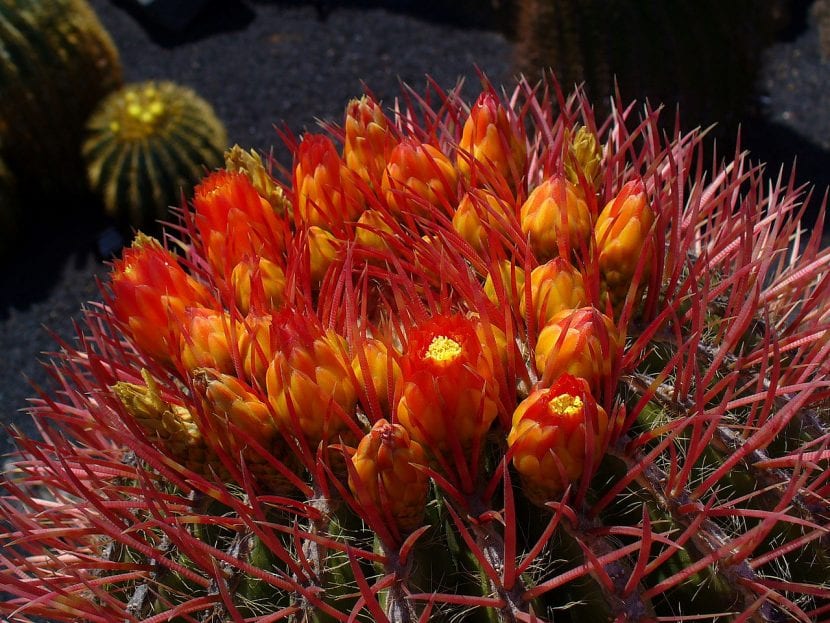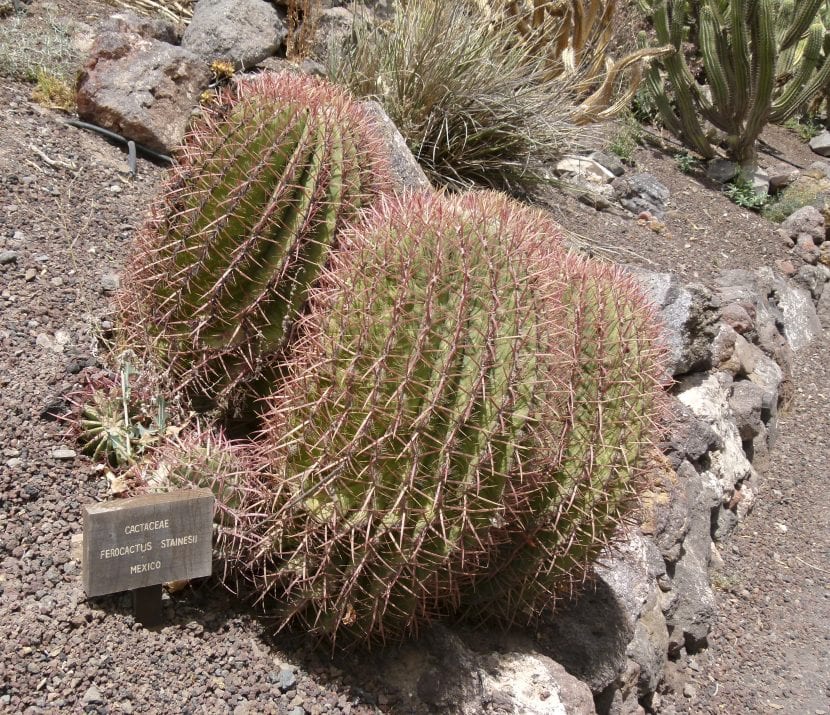
This is a cactus that many like ... and many others detest. It has everything so that there are people who admire it, or who hate it: long wide spines, orange blooms sprouting from the top, and slow enough growth that it can be potted for years… And even throughout his life.
His scientific name is Ferocactus stainesii, although you will probably know it better by its other name: Barrel Biznaga. It is usually one of the first cactus species to be included in collections, since, despite being very common, its spines attract a lot of attention.
Characteristics of the Barrel Biznaga

Our protagonist is originally from Mexico, and has a globular body that lengthens as the years go by, being able to reach 1m high and 50cm in diameter. Its spines are up to 4cm long and are deep red as you can see in the image above. The flowers, which bloom in summer, are bell-shaped and orange in color.
Its growth rate is very slow, which allows us to keep it in pots for years and years. Yes indeed, it is important that it be transplanted every spring to one that is 2-3cm wider for optimal growth and development.
How do you take care of yourself?

Although it is a very resistant cactus, it is convenient to cultivate it well because it must be said that it rots very easily 🙁. To avoid this, I recommend the following:
- Location: outside, in full sun. Withstands frosts down to -3ºC. If you live in a colder climate, keep it indoors for the winter, in a room with plenty of natural light.
- Irrigation: occasional. Once a week in summer, and every 15 days the rest of the year, except in winter when it will be watered once every 20-25 days.
- Subscriber: very advisable to fertilize during spring and summer with specific fertilizers for cacti.
- Substratum: it must have good drainage. You can use black peat mixed with perlite in equal parts, or mix leaf mulch with 50% siliceous sand.
- Plagues and diseases: If the environment is very dry, it can be affected by mealybugs that can be removed with a swab from the ears moistened with water or pharmacy alcohol.
Enjoy your cactus 🙂.
Mine has taken on a slight purple color. It is normal?
Hello José María.
Have you recently had it? And, did you get the sun before or was it in the shade? Is that if it was in shadow, surely it is burning. That happens a lot when cacti are put in sunny places without having accustomed them before.
To prevent it from going overboard, I recommend putting it in a place where it is very bright, but without direct sunlight. When spring comes, move it to a sunnier area, and keep it there for an hour each day. Increase the exposure time by an hour as the weeks go by.
But beware, that another possible cause is that it is being cold. If it is the first winter that spends with you, it is advisable to protect it either indoors if there are moderate frosts in your area, or with an anti-frost fabric if they are weak (up to -2ºC).
Greetings.